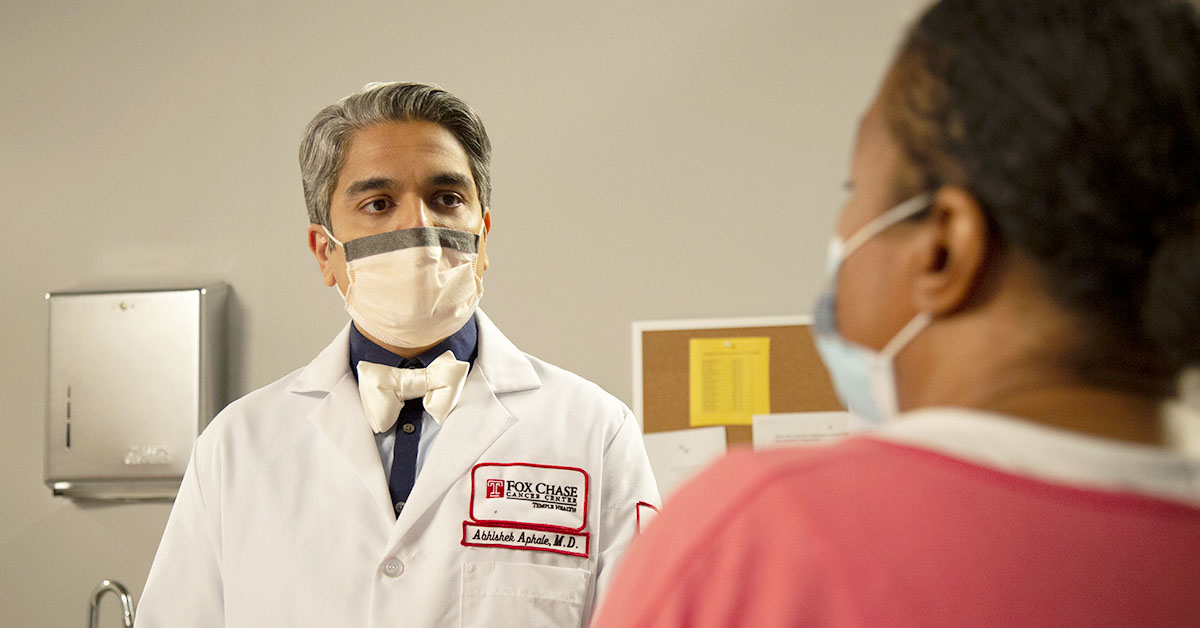
Skin Cancer Screening: When to Get Screened and What to Expect
-
While skin cancer is the most common cancer in the United States, its two most common types (basal cell carcinoma and squamous cell carcinoma) are usually curable with appropriate and prompt treatment. While this is good news, some skin cancers (including melanoma) are more dangerous and can be attributed to most skin cancer deaths.
Like most other cancers, all types of skin cancer are more treatable in their earlier stages. Because of this, it’s best to find them early through a visual skin exam.
When Should I Get a Skin Cancer Screening?
Most medical organizations in the United States don’t have specific age recommendations for when to start getting visual skin exams. However, there’s no wrong time to start screenings.
“Anyone who has certain risk factors should get a baseline skin exam,” said Abhishek Aphale, MD, a dermatologist at Fox Chase Cancer Center.
You may be at high risk of skin cancer if you have:
- Fair skin
- Blonde or red hair
- Blue or green eyes
- Skin that burns or freckles easily
- A history of sunburns
- A history of tanning bed use
- A job requiring a significant amount of time outdoors
- A family or personal history of skin cancer
- A large number of moles
If you find out a first-degree relative has skin cancer, Aphale recommends getting a baseline skin exam as soon as possible.
“If you just found out that your mother was diagnosed with melanoma, even if you’re 18 years old, go ahead and get screened,” Aphale said. “Or, if you’ve had melanoma, it would be beneficial for your children to have a skin exam.”
Anyone who is concerned about a spot on their skin should get screened, too—even if they aren’t at high risk.
What Happens During a Skin Cancer Screening?
Skin cancer screenings consist of a simple visual exam to find anything that looks suspicious. You will be asked to change into a gown provided by the dermatology office. Typically, it’s a head-to-toe exam including all areas that the patient is comfortable having checked.
“We typically advise patients to keep their undergarments on, and we tell them that we do not have to examine anything that would cause them to be uncomfortable,” Aphale said. “Conversely, we are happy to respectfully examine any and all areas of the skin that the patient wants us to examine.”
If My Doctor Finds Something Suspicious, What Happens Next?
In most cases, the dermatologist will take a biopsy of the lesion, which involves numbing the area and taking a small sample of tissue. The procedure is simple, and most people say they don’t feel any discomfort at all.
“The actual procedure takes seconds,” Aphale said. “We try to keep the biopsy as small as possible while making sure it’s large enough for the pathologist to make a confident diagnosis.”
It’s important to know that even if the lesion looks fully removed after a biopsy, a lot of skin cancers extend beyond what can be seen with the naked eye. So, even if the lesion looks like it’s gone, treatment may still be needed if cancer is found.
Biopsy results are usually available within a week.
Can I Opt to Have a Suspicious Lesion Watched Instead of Getting a Biopsy?
Sometimes that is a viable option, but it will depend on whether your dermatologist feels that there is a low or high suspicion of the lesion being cancerous or otherwise harmful.
“If we’re monitoring a skin lesion, we’re watching for the area to grow,” Aphale said. “But the bigger the area becomes, the more difficult the treatment becomes, too.”
Learn more about skin cancer diagnosis and treatment at Fox Chase Cancer Center
